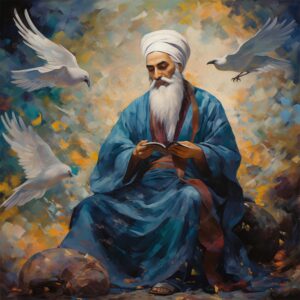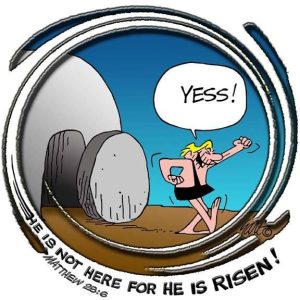Annie Dillard, in her radiant book Pilgrim at Tinker Creek, tells of a girl blind from birth who had an operation which restored her sight. When the bandages were removed and she was led into the garden, she saw what she described as “the tree with the lights in it.”
For years Annie Dillard desired to see for herself this mystical tree, until one day she did: “I was walking along Tinker Creek thinking of nothing at all and I saw the tree with the lights in it. I saw the backyard cedar where the mourning doves roost charged and transfigured, each cell buzzing with flame. I stood on the grass with the lights in it, grass that was wholly fire, utterly focused and utterly dreamed. It was less like seeing than like being for the first time seen, knocked breathless by a powerful glance. The flood of fire abated, but I’m still spending the power” (p.33).
What is this phenomenon of “the tree with the lights in it?” Perhaps another firsthand account will help to elucidate. Joy Davidman, wife of C.S. Lewis, had a mystical side. According to David C. Downing in Into the Region of Awe: Mysticism in C.S. Lewis, “All her life she remembered something that happened to her as a fourteen-year-old: her sense of epiphany in watching a sunset through the glistening, ice-glazed branches of a tree. Though her atheist Jewish father felt the experience could easily be explained away, she retained a sense that somehow she had witnessed a kind of burning bush” (p.49).
This reference to the burning bush reminds us that the Bible is full of mystical trees, beginning with the two trees in the Garden of Eden, progressing through the burning bush and the Tree of the Cross, and ending with the trees along the River of Life which bear fruit all year long and whose leaves are for healing (Rev 22:2). From Moses to Jesus, many biblical prophecies and parables feature trees. To cite just one example, the first chapter of Jeremiah records his vision of the branch of an almond tree, accompanied by the Lord’s promise that He would be “watching” to see that His word was fulfilled. (The Hebrew words for “almond” and “watching” are similar.) One wonders what may have drawn Jeremiah’s attention to this branch in the first place. Did it perhaps have lights in it?
Many Christian writers have described mystical experiences with trees. Thomas Traherne, a seventeenth-century poet and devotional writer, described one of his earliest memories of childhood: “The green trees, when I saw them first through a gate, transported and ravished me; their sweetness and unusual beauty made my heart to leap, and almost mad with ecstasy, they were such strange and wonderful things.” And the classic devotional The Practice of the Presence of God begins with an account of the most significant spiritual event in Brother Lawrence’s early life. It occurred on a cold midwinter day when, “while looking at a tree stripped of its leaves, and reflecting that before long its leaves would appear anew, then its flowers and fruits would bloom, he received such a high view of the power and providence of God that it has never since been erased from his soul.”
And then there is William Blake, who had his first vision of angels in 1765, aged eight, while walking on Peckham Rye, a park in Greater London. Blake later described his vision as “a tree filled with angels, bright angelic wings bespangling every bough like stars.”
The most mystical of all trees is the Cross, which of course is a special case because it is a dead tree—two sticks of wood—upon which the source of all life died for the salvation of the world. In “The Dream of the Rood,” one of the oldest works of English literature (probably 8th century), the tree upon which Christ died tells its own story: how it was cut down, fashioned into a cross, shared our Lord’s passion, and was finally raised with Him as a glorious tree. This dazzling poem has some of the most gorgeous lines in the English (albeit Old English) language. Just a taste (in a modernized version) from the beginning, where the author introduces his dream:
It seemed to me that I saw the greatest tree
brought into the sky, bewound in light,
the brightest of beams. That beacon was entirely
garnished with gold, blazoned with gemstones.
Every angel of the Lord guarded it there,
a brilliant sight of a universe to come.
Having written a book about rocks—Jesus: His Story In Stone—some day I hope to write one about trees, in particular the trees of the Bible. Many years ago Ron Reed, Artistic Director of Pacific Theatre in Vancouver, wrote a review of some of my early books, which began: “Mike Mason thinks different. Different than me, anyhow. To clarify the degree of difference, I once asked him what would be his favourite way to spend an hour. He said, ‘To sit and contemplate a tree.’ I don’t remember what my response would have been to that question at the time, but if it involved trees, it would have been something more along the lines of climbing them or building a tree fort. Certainly nothing involving contemplation. But that’s the way Mike is built. He’s a contemplative.”
I’m still contemplating trees, Ron, and still spending the power, along with Moses, Jeremiah, Brother Lawrence, Thomas Traherne, Joy Davidman, Annie Dillard, etc. Maybe there will be an Arboreal Club in Heaven.
Follow this link to a beautiful short video by the Bible Project on the Tree of Life and other biblical trees.
Next Post: Old and Full of Years: Eating Sin for Breakfast





